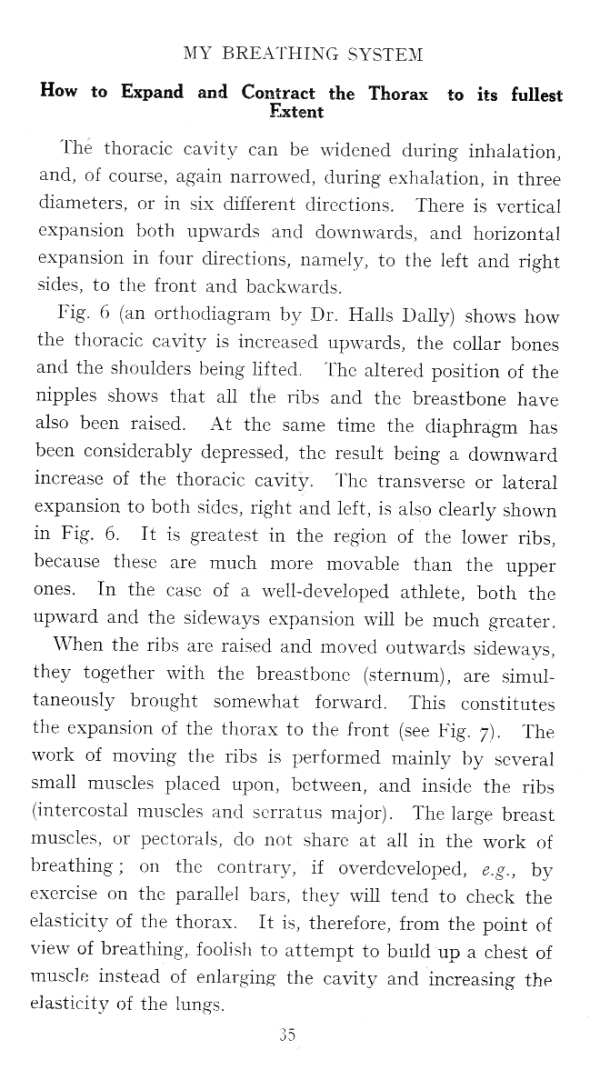mbs 035

MY BREATHING SYSTEM
How to Expand and Contract the Thorax to its fullest
Extent
The thoracic cavity can be widcned during inhalation, and, of course, again narrowed, during exha1ation, in three diameters, or in six diilerent directions. There is vcrtical expansion both upwards and downwards, and horizonta! expansion in four directions, namely, to the left and right sides, to the front and backwards.
Fig. 6 (an orthodiagram by Dr. Halls Daily) shows how the thoracic cavity is increased upwards, the collar bones and the shoulders being lifted. The altered position of the nipples shows that all the ribs and the breastbone have also becn raiscd. At the same time the diaphragm has becn considcrably depressed, the result being a downward inerease of the thoracic cavity. The transver.se or latcral expansion to both sides, right and left, is also clearly shown in Fig. 6. It is greatest in the region of the lower ribs, because these are much morę movable than the upper ones. Tn the casc of a well-developed atłrlete, both the upward and the sideways expansion will be much greater.
When the ribs are raised and moved outwards sideways, they together with the breastbone (sternum), are simul-taneously brought somewhat forward. This constitutes the expansion of the thorax to the front (see Fig. 7). The work of moving the ribs is performed mainly by scveral smali muscles placed upon, between, and inside the ribs (intercostal muscles and serratus major). The large breast muscles, or pectorals, do not sharc at all in the work of breathing; 011 the contrary, if overdeveIoped, e.g., by excrcise on the parallel bars, they will tend to check the elasticity of the thorax. It is, therefore, from the point of view of breathing, foolisli to attempt to build up a chest of muscle instead of enlarging the cavity and inereasing the elasticity of the lungs.
Wyszukiwarka
Podobne podstrony:
mbs 063 MY BREATHING SYSTEM beginncrs to assist with the hands in the following manner : Takc tbem a
mbs 084 MY BREATHING SYSTEM tliercfore, to be performed with the l)ody in difterent positions. At Wh
mbs 014 MY BREATHING SYSTEM slow, regular respiration, even during the hardcst and most protracted e
mbs 049 MY BREATHTNG SYSTEM diaphragm, which, having by this timc desccnded until its central tendon
mbs 010 MY BREATHING SYSTEM would die. But few understand how to brcathe, inhale and exhale, corrcct
mbs 027 MY BREATHING SYSTEM sucked in. For persons who lind it very difficult to acquire tłiis contr
mbs 047 MY BREATHING SYSTEM are so strong that they are able to break a chain, put around the chest,
więcej podobnych podstron